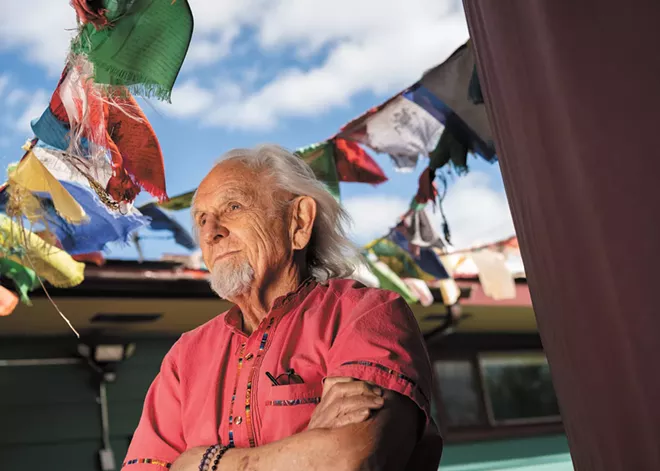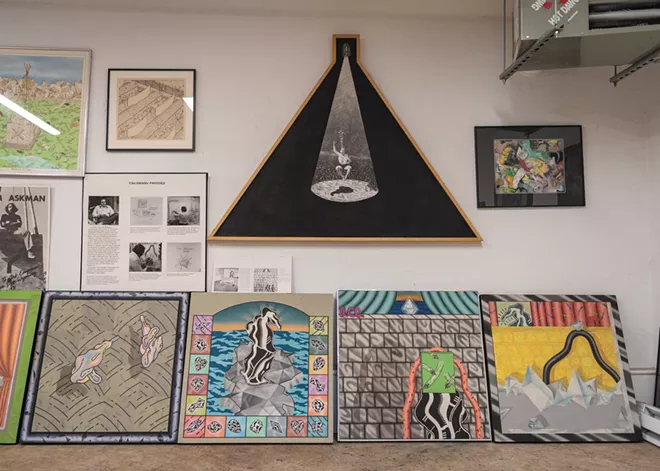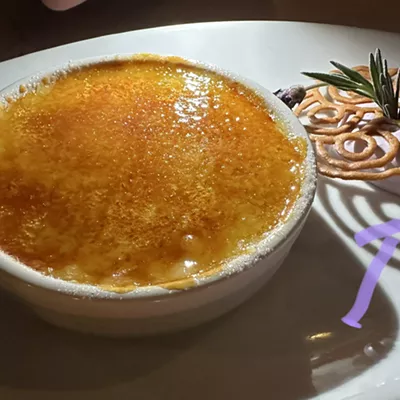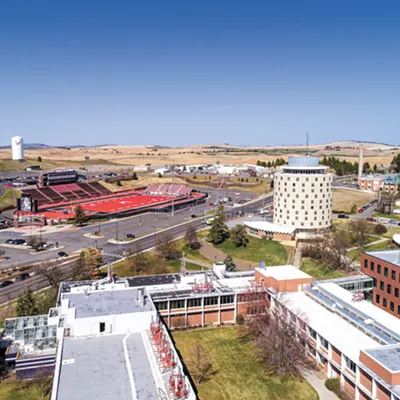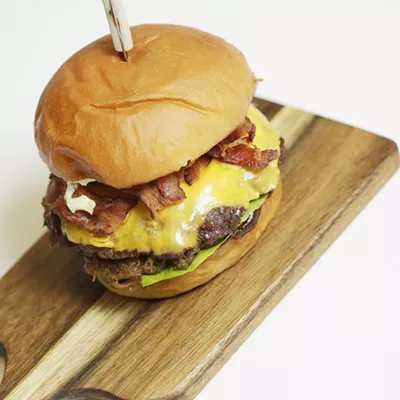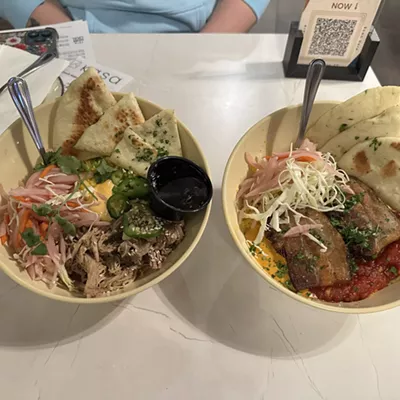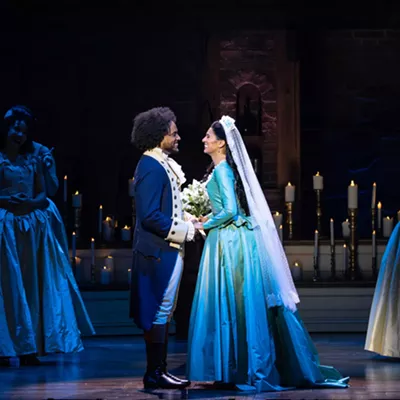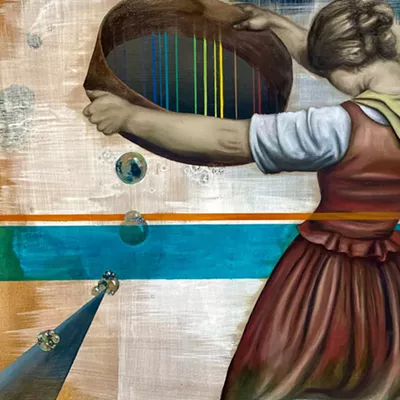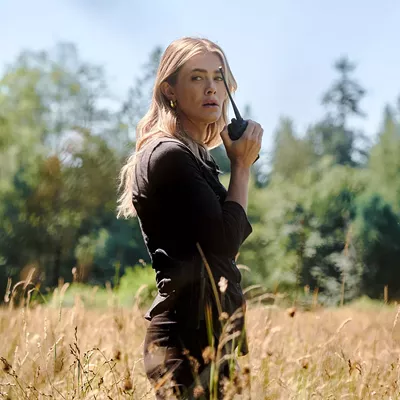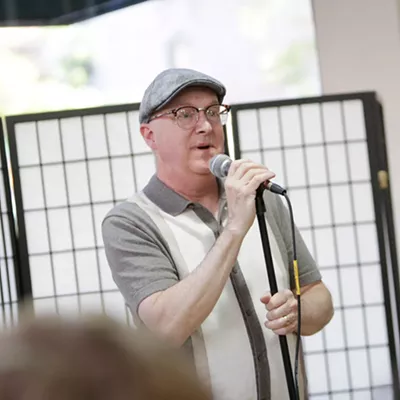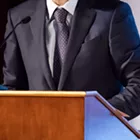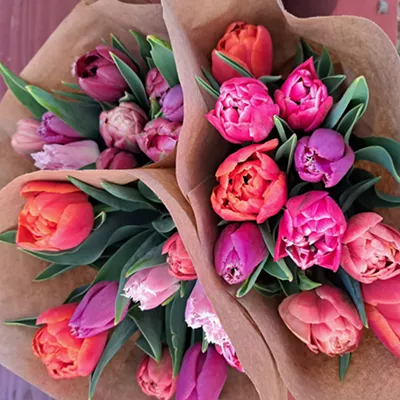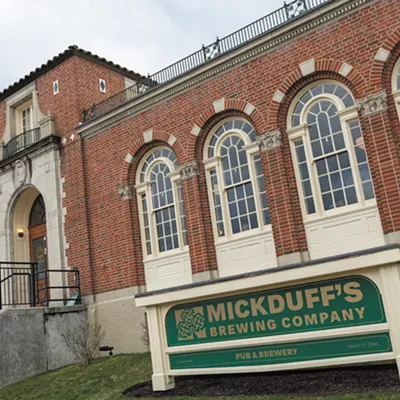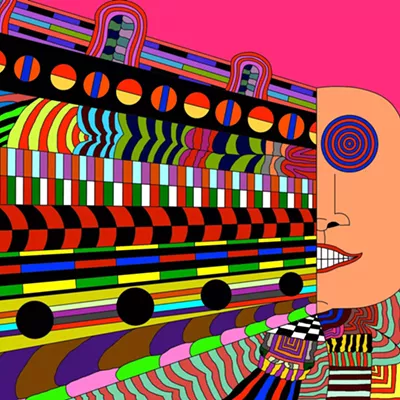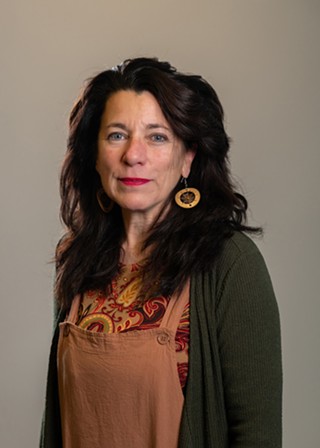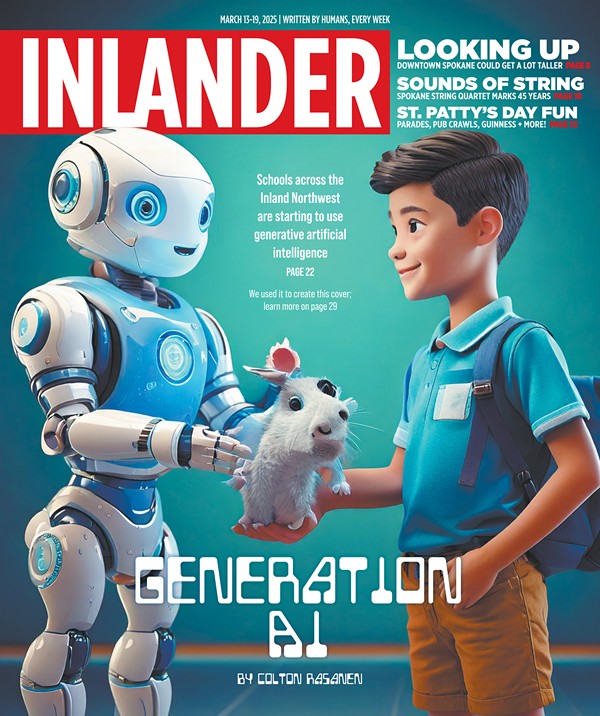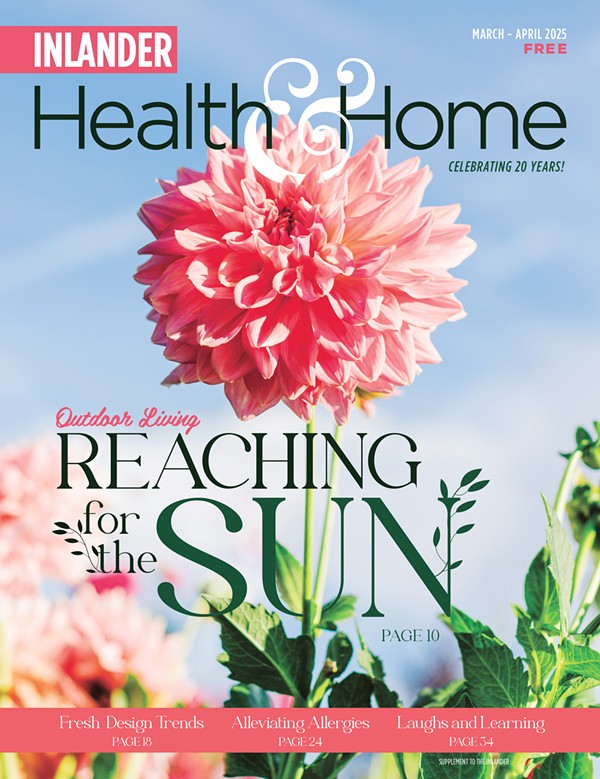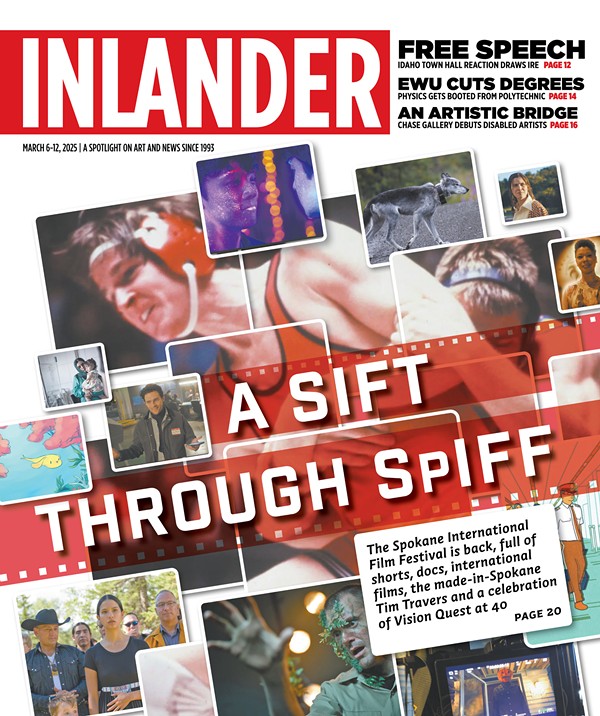At 83, artist and longtime art teacher Tom Askman has these wise words for would-be artists: "There are no rules in artmaking except for the one rule that there are no rules."
Don't get hung up on technique or trying to emulate a certain style, says Askman, who taught studio art at Eastern Washington University from 1972 to 2022. Instead, "just be able to explore everything that you can come up with from your intuition and use your imagination to step beyond."
It's an approach Askman has taken to heart over his 60-year career, highlights of which are included in his solo retrospective appropriately titled "Convoluted Ambiguities," on display Sept. 6 to 28 at Kolva-Sullivan Gallery in downtown Spokane.
The exhibition features a mashup of Askman's paintings, drawings and mixed-media sculpture, as well as poster images from his four decades creating art for public spaces locally and nationwide.
Seattle visitors, for example, might be familiar with the "Ballard Gateway," eight metal sculptures celebrating Native American and Scandinavian culture, fishing, and boatbuilding, which Askman co-created in 2003 with the late Lea Ann Lake. For "Velocity" on the façade of Spokane's Fire Station No. 3 on West Indiana Avenue, Askman combined custom brickwork and cast bronze to make it appear that two fire hoses are bursting through the building's entrance.
"Part of the joy of doing public art was going to meet all these people around the country," says Askman, who sought out Spokane artist Harold Balazs to help him master the welding and fabrication skills he knew he'd need to continue making public art.
"Another reason I thought I wanted to make public art was because it's visible all the time [while] you do a painting or a drawing, and it might be shown once every 10 years in the museum, and nobody ever sees it," he says.
The Kolva-Sullivan exhibition coincides with Askman's first book, the Way Back to BEing, a self-guided workbook he compiled as an outgrowth of an EWU class he created several years ago called "How to Access the Sacred Gift of Your 'Intuitive Mind' by Reconnecting to Your Authentic Self."
The Way Back to BEing is divided into two sections. The first part shares details of Askman's personal journey, including how he left his hometown in Casper, Wyoming, in 1962 for art school in San Francisco and developed a lifelong toxic relationship with alcohol.
While in San Francisco, Askman initially earned a bachelor's degree in education, enabling him to teach art at the K-12 level, but quickly returned to California College of Arts and Crafts to earn his Bachelor of Fine Arts. He followed that with a Master of Fine Arts at the University of Colorado, while also serving in Wyoming's Air National Guard, which kept him from being shipped to Vietnam.
Two brief college teaching gigs followed — University of Minnesota and Nicholls State University in Thibodaux, Louisiana — before Askman joined a friend on a long-distance road trip to the Pacific Northwest for a college art teaching job fair. He offhandedly submitted his résumé to the small agricultural college in Cheney still known as Eastern.
Thirteen years into his tenure at EWU, Askman had a life-changing suicidal moment, and has been in recovery ever since. More than just stopping drinking, however, Askman describes starting something: "Experiencing love, contentment, intuitive knowing, purpose, community, happiness, deep connections with others and bliss."
The second half of the Way Back to BEing offers hands-on activities to bring about the kind of transformation Askman himself experienced, including intuitive artmaking that is spontaneous, nonrepresentational, and guided by something innate yet unnamed.
Examples of Askman's intuitive paintings and drawings are included in the Kolva-Sullivan exhibition.
"The title of the show is 'Convoluted Ambiguities,'" reiterates artist Ellen Picken, one of Askman's former students. That means "not only being comfortable but encouraging, [even] welcoming, the unknown and being OK with 'never knowing' ... letting life be ambiguous," Picken says.
Picken was majoring in environmental sociology when she took her first art class — painting — with Askman to fulfill a liberal arts requirement. She enjoyed it, realizing that its focus was personal development and the creative process.
"[Askman] can tell when somebody is really getting a lot out of creating," says Picken, who eventually switched her major to art and built a successful career painting murals locally and nationwide. "He'll start just guiding that student and by his own actions, too, showing them how you can really dive into a deeper sense of wonder in the world through art."
In addition to providing a testimonial for his book, Picken stays in touch with her former teacher, attending gatherings in a unique space Askman created on his Spokane property, which he calls HeartSpace.
At 30-feet across, HeartSpace is a yurt or rounded, tent-like structure that Askman bought and installed for any groups "based on conscious evolution, meditation, drumming, yoga, ecstatic dance, vibration therapy, AA, Alanon and other holistic endeavors," according to the limited advertising he does for it on Facebook.
It's been home to poetry workshops, a drum circle that usually meets in Manito Park, intuitive art classes and more. Although the space is free to use, Askman accepts and redirects any donations to local nonprofits.
But why would someone open their home to strangers that way?
Askman just smiles. "The universe just said, 'Tom, part of your function in life is to create a space for connection.'" ♦
Convoluted Ambiguities • Sept. 6-28; artist reception Fri, Sept. 6 from 5-8 pm; gallery open Thu-Sat from noon-6 pm or by appointment • Free • Kolva-Sullivan Gallery • 115 S. Adams St. • Facebook: Kolva-Sullivan-Gallery • 509-458-5517

